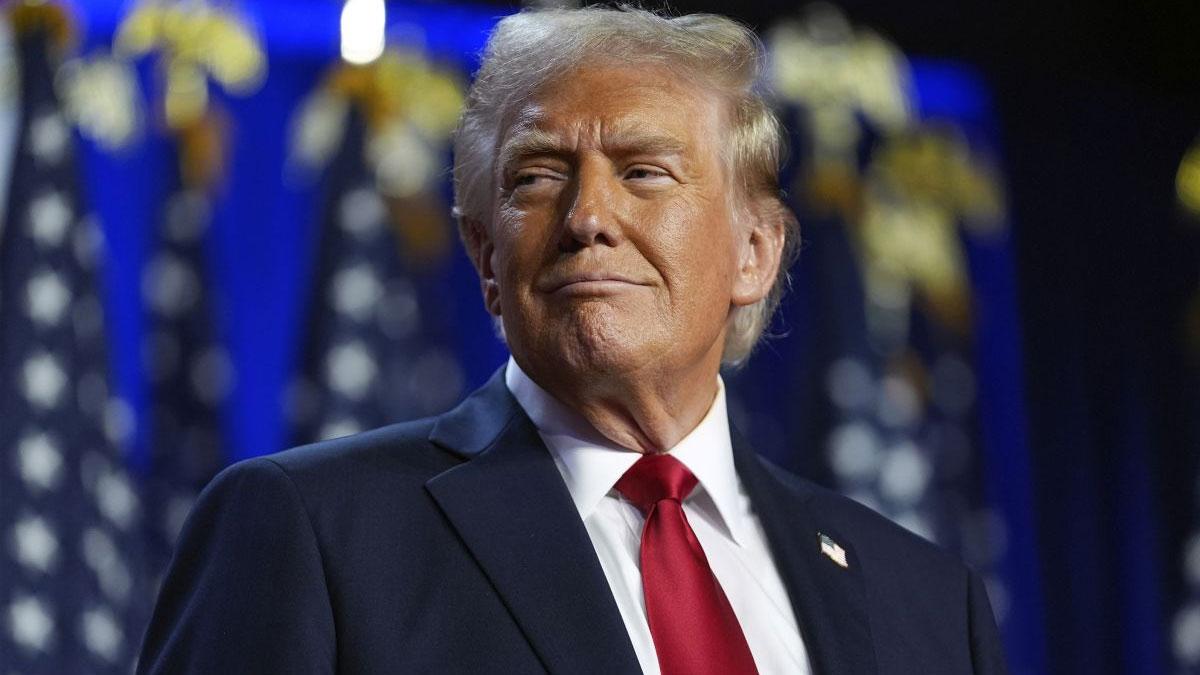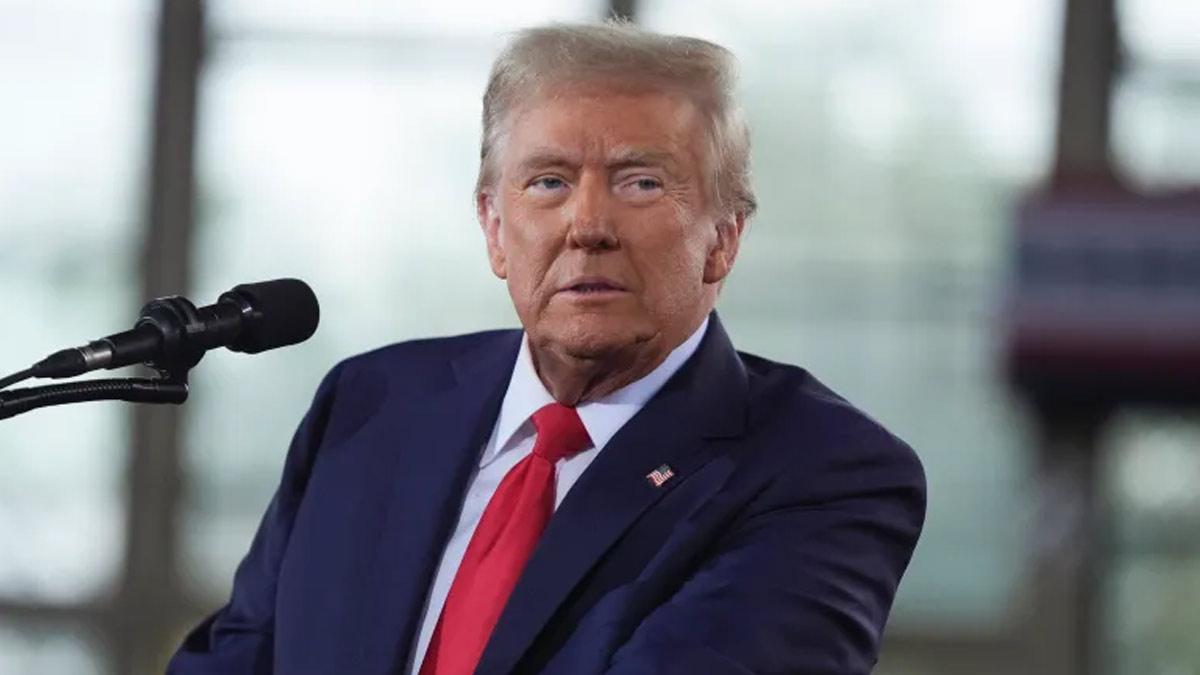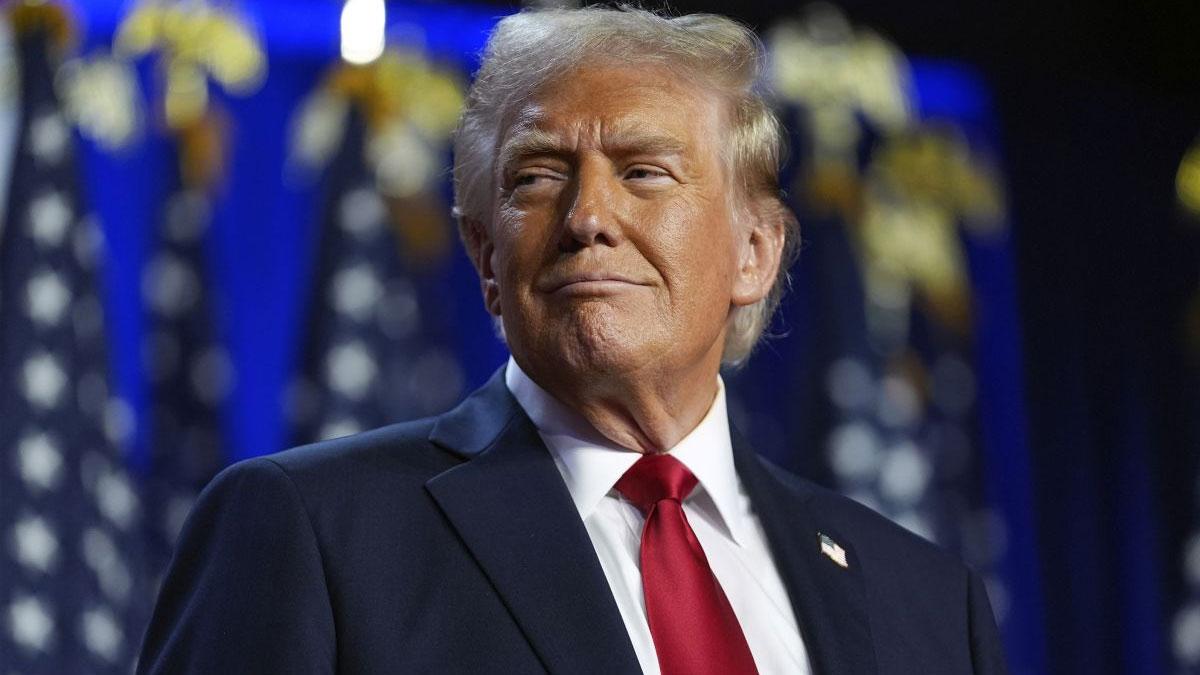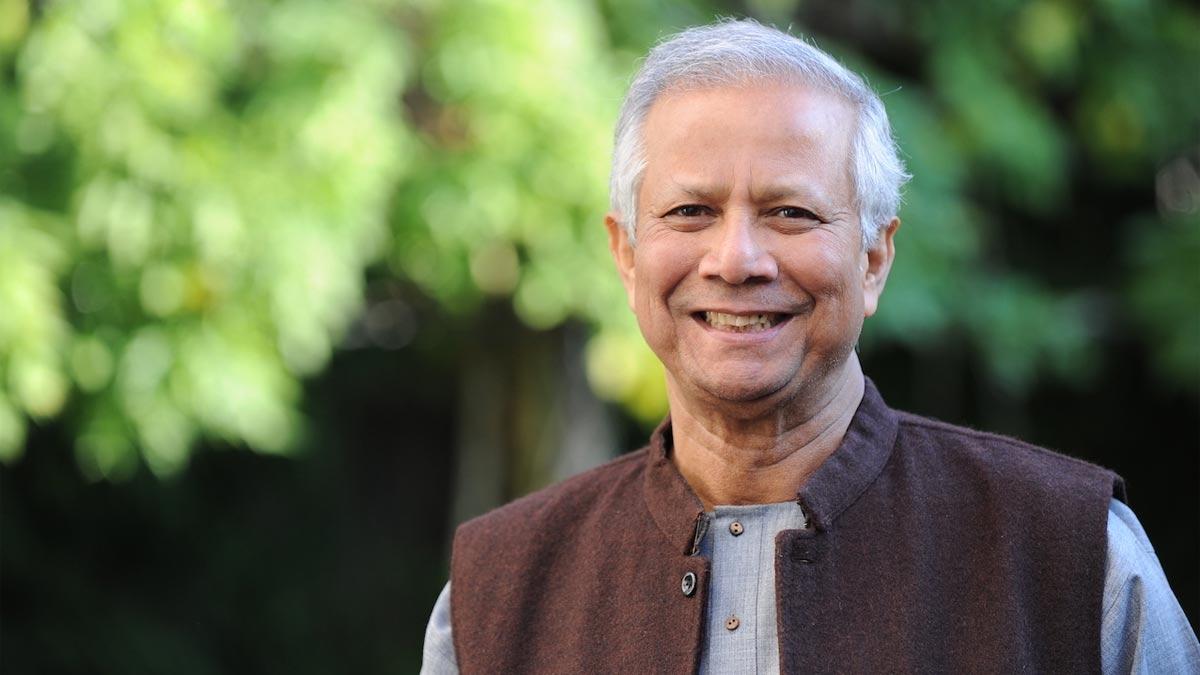In a reaffirmation of their strong bilateral ties, Prime Minister Narendra Modi and former US President Donald Trump underscored the depth of the India-US Comprehensive Global Strategic Partnership.
Grounded in mutual trust and shared democratic principles, their high-profile meeting in Washington highlighted a commitment to core values such as freedom, the rule of law, human rights, and pluralism.
According to a press statement from the Prime Minister’s Office, this engagement signified the enduring strength of their alliance.
During their discussions, the two leaders introduced a groundbreaking initiative titled the "US-India COMPACT (Catalysing Opportunities for Military Partnership, Accelerated Commerce & Technology) for the 21st Century." This program aims to drive substantial progress across key areas of collaboration. As part of this initiative, they pledged to pursue a goal-oriented strategy, ensuring tangible outcomes within the year to reflect the level of trust and mutual benefits their partnership fosters.
Strengthening Defence Cooperation
Reaffirming their dedication to a dynamic and multidimensional defence partnership, Modi and Trump announced plans to formalize a new ten-year framework for the ‘US-India Major Defense Partnership’ within the year. This agreement is set to elevate defence ties and strategic coordination between the two nations.
The leaders acknowledged the increasing presence of US-origin military equipment in India’s arsenal, which includes C-130J Super Hercules, C-17 Globemaster III, P-8I Poseidon aircraft, CH-47F Chinook helicopters, MH-60R Seahawk helicopters, AH-64E Apache attack helicopters, Harpoon anti-ship missiles, M777 howitzers, and MQ-9B drones. To further bolster defence cooperation, they agreed to expand arms sales and joint production efforts, enhancing interoperability and strengthening defence industry ties.
Moreover, they outlined plans to pursue new defence procurements and co-production arrangements in 2024. This includes acquiring "Javelin" Anti-Tank Guided Missiles and "Stryker" Infantry Combat Vehicles, reinforcing India’s combat capabilities. Additionally, they confirmed progress on India’s planned procurement of six more P-8I Maritime Patrol aircraft, a move that will significantly enhance maritime surveillance in the Indian Ocean Region. This follows successful negotiations on the terms of sale between both nations.
Acknowledging India's status as a Major Defence Partner and its Strategic Trade Authorization-1 (STA-1) designation, as well as its critical role within the Quad, the United States and India have agreed to review their respective arms transfer regulations, including the International Traffic in Arms Regulations (ITAR). This initiative aims to simplify defence trade procedures, enhance technology exchanges, and streamline maintenance, spare supplies, and in-country repair operations for US-supplied defence systems.
The two leaders also advocated for the initiation of negotiations within the year for a Reciprocal Defence Procurement (RDP) agreement, which seeks to harmonize defence procurement systems between the two nations, thereby enabling a smoother exchange of defence goods and services.
Advancing Defence Technology Collaboration
Both nations pledged to fast-track cooperation in defence technology across multiple strategic sectors, including space, air defence, missile technology, maritime security, and undersea warfare. In addition, the US announced that it would reassess its policy regarding the potential transfer of fifth-generation fighter jets and undersea systems to India, reflecting the deepening trust in their partnership.
Expanding on the US-India Roadmap for Defence Industrial Cooperation, the leaders also launched a new initiative—the Autonomous Systems Industry Alliance (ASIA). This platform is designed to scale up industry partnerships and enhance autonomous systems production across the Indo-Pacific region.
Furthermore, they welcomed a strategic collaboration between Anduril Industries and Mahindra Group to co-develop and co-produce cutting-edge maritime systems and AI-enabled counter-Unmanned Aerial Systems (UAS), reinforcing regional security. Additionally, they endorsed a new partnership between L3 Harris and Bharat Electronics, which will focus on the co-development of active towed array sonar systems to strengthen India's naval capabilities.
The leaders reaffirmed their commitment to expanding military cooperation across all strategic domains—air, land, sea, space, and cyberspace—by enhancing joint training, military exercises, and operational coordination, integrating cutting-edge technologies. They also welcomed the upcoming “Tiger Triumph” tri-service exercise, which was first held in 2019, noting that its next iteration in India will be conducted on a larger scale with increased complexity to further strengthen interoperability.
Strengthening Indo-Pacific Security
To bolster security and stability in the Indo-Pacific, the two nations committed to enhancing support for overseas military deployments, improving logistics cooperation and intelligence sharing, and establishing measures to facilitate force mobility for joint humanitarian and disaster relief operations. These initiatives are part of a broader framework aimed at deepening security collaboration through exchanges and expanded defence engagements.
Boosting Trade and Investment
Recognizing the importance of economic collaboration, the leaders agreed to strengthen trade and investment ties, fostering greater prosperity, technological innovation, and the development of resilient supply chains. Their shared objective is to expand the US-India trade partnership in a way that promotes fairness, enhances national security, and generates employment opportunities.
To achieve this, they introduced "Mission 500," an ambitious target aimed at more than doubling bilateral trade to $500 billion by 2030. Acknowledging the need for updated and equitable trade frameworks, they announced plans to begin negotiations for the first phase of a comprehensive Bilateral Trade Agreement (BTA) by fall 2025.
To facilitate this, both nations will appoint senior representatives to oversee the progress of these negotiations, ensuring that trade policies align with the objectives outlined in the COMPACT initiative. They pledged to adopt an integrated approach to deepening bilateral trade relations across goods and services, focusing on expanding market access, reducing tariff and non-tariff barriers, and enhancing supply chain connectivity.
Strengthening Bilateral Trade and Investment
The leaders acknowledged initial steps taken to address trade barriers, demonstrating a mutual commitment to fostering fair and open economic ties. The United States welcomed India’s recent tariff reductions on key US exports, including bourbon, motorcycles, ICT products, and metals, along with measures that enhance market access for US agricultural products. In turn, India appreciated the US efforts to facilitate the export of Indian mangoes and pomegranates to American markets.
Both nations pledged to expand bilateral trade opportunities, particularly by boosting US exports of industrial goods to India and enhancing Indian exports of labor-intensive manufactured products to the US. Additionally, both sides agreed to increase agricultural trade and promote greenfield investments in high-value industries.
Investment Commitments and Economic Growth
The leaders welcomed ongoing Indian investments in the US, which total approximately $7.35 billion and support over 3,000 high-quality jobs. Notable investments include:
Hindalco’s Novelis – Advanced aluminum goods production in Alabama and Kentucky
JSW Steel – Expanding steel manufacturing operations in Texas and Ohio
Epsilon Advanced Materials – Establishing critical battery materials manufacturing in North Carolina
Jubilant Pharma – Advancing injectable pharmaceutical production in Washington
Advancing Energy Security and Collaboration
Recognizing their roles as global energy leaders, both countries reaffirmed their commitment to ensuring energy affordability, reliability, and market stability through the US-India Energy Security Partnership. This collaboration spans oil, natural gas, and civil nuclear energy, with a focus on enhancing hydrocarbon production to secure affordable energy prices and prevent supply disruptions.
The leaders also underscored the importance of strategic petroleum reserves to safeguard economic stability during crises. In this context, the US affirmed its strong support for India’s full membership in the International Energy Agency (IEA), further integrating India into the global energy market.
Civil Nuclear Cooperation
Reaffirming their commitment to deepening nuclear energy collaboration, the leaders pledged to fully implement the US-India 123 Civil Nuclear Agreement. This includes plans to develop US-designed nuclear reactors in India, leveraging large-scale localization and technology transfer.
Additionally, the two sides welcomed India’s recent budget announcement to amend the Atomic Energy Act and the Civil Liability for Nuclear Damage Act (CLNDA) to facilitate US-India cooperation on nuclear energy projects. These amendments aim to streamline civil liability issues, enabling joint production and deployment of nuclear reactors by Indian and US industries.
Technology and Innovation
The leaders have introduced the US-India TRUST initiative (Transforming the Relationship Utilizing Strategic Technology), a groundbreaking effort designed to foster collaboration between governments, academia, and the private sector. This initiative will drive advancements in critical and emerging technologies, spanning defence, artificial intelligence, semiconductors, quantum computing, biotechnology, energy, and space. Additionally, it emphasizes the importance of utilizing trusted technology vendors while ensuring the protection of sensitive technologies.
As a key component of the TRUST initiative, both nations have pledged to partner with private industries in the US and India to develop a US-India Roadmap on Accelerating AI Infrastructure by year-end. This roadmap will outline the financial, logistical, and technical challenges involved in establishing, expanding, and integrating large-scale AI infrastructure of US origin in India. It will also establish milestones and future actions to overcome these hurdles.
The two countries will collaborate to facilitate industrial partnerships and investments in next-generation data centers, enhance access to computing power and processors for AI, and promote innovations in AI models and applications aimed at solving societal challenges. At the same time, they will implement necessary safeguards to protect these technologies while streamlining regulatory frameworks.
In addition, the leaders unveiled INDUS Innovation, a cutting-edge initiative inspired by the successful INDUS-X platform. This new venture aims to strengthen ties between industry and academia in both nations, fueling investments in space, energy, and emerging technologies to sustain their leadership in global innovation and meet the demands of the 21st century.
Reaffirming their commitment to INDUS-X, the leaders emphasized its role in facilitating collaboration among US and Indian defence firms, investors, and academic institutions to enhance military capabilities. They also welcomed the upcoming INDUS-X summit in 2025.
Recognizing the vital role of critical minerals in the advancement of emerging technologies and modern manufacturing, the US and India will accelerate joint research, development, and investment across the entire critical mineral value chain. Both countries, as members of the Mineral Security Partnership, will work together to ensure a stable and sustainable supply of these essential resources.
Further strengthening this commitment, the leaders introduced the Strategic Mineral Recovery initiative, a collaborative US-India program aimed at extracting and processing critical minerals from industries such as aluminium, coal mining, and oil and gas. This initiative will focus on exploration, beneficiation, processing, and recycling technologies to maximize resource efficiency and secure supply chains.
Strengthening US-India Cooperation in Space, Security, and Global Stability
The year 2025 is set to mark a new milestone in US-India civil space collaboration, with the launch of a NASA-ISRO mission in partnership with AXIOM to send the first Indian astronaut to the International Space Station (ISS). Additionally, both nations are preparing for the early launch of the NISAR mission, a groundbreaking project that will employ dual radar technology to systematically map changes to Earth's surface.
The leaders emphasized the need for enhanced cooperation in space exploration, particularly in long-duration human spaceflight, spaceflight safety, and exchange programs that will facilitate knowledge-sharing in emerging areas such as planetary protection.
To further strengthen scientific collaboration, the US and India announced a new research partnership between the US National Science Foundation (NSF) and India’s Anusandhan National Research Foundation. This initiative builds on existing joint research efforts between the NSF and Indian science agencies, covering critical areas such as semiconductors, connected vehicles, artificial intelligence, next-generation telecommunications, intelligent transportation systems, and future biomanufacturing.
Recognizing the need to remove barriers to technology transfer, both governments pledged to redouble efforts in addressing export controls, enhancing high-tech commerce, and ensuring technology security.
Multilateral Cooperation and Indo-Pacific Strategy
The leaders reiterated their commitment to a free, open, peaceful, and prosperous Indo-Pacific, emphasizing the strategic role of ASEAN and the importance of adhering to international law, ensuring maritime security, and promoting unimpeded lawful trade. As Quad partners, both nations are set to introduce new initiatives, including airlift capacity for natural disaster response and joint maritime patrols to enhance interoperability.
Ahead of the Quad Leaders’ Summit in New Delhi, Prime Minister Narendra Modi looks forward to hosting US President Donald Trump, where both leaders will discuss expanding cooperation in the Middle East and beyond. Within the next six months, a summit will be convened for India-Middle East-Europe Corridor partners and the I2U2 Group to launch new initiatives in 2025.
Acknowledging India’s role as a key security provider in the Indian Ocean Region, both leaders have launched the Indian Ocean Strategic Venture, a new bilateral forum aimed at boosting economic connectivity and commerce.
Expanding Digital Infrastructure and Regional Stability
As part of efforts to enhance digital infrastructure, the leaders welcomed Meta’s multi-billion-dollar investment in an undersea cable project spanning 50,000 km across five continents, which will strengthen digital connectivity in the Indian Ocean region and beyond. India has also committed to investing in the maintenance and financing of these cables, utilizing trusted vendors.
The leaders recognized the need to establish plurilateral partnerships across the Western Indian Ocean, Middle East, and Indo-Pacific, focusing on defense, technology, energy, and critical minerals. They also committed to expanding military cooperation in multinational settings to strengthen global peace and security.
India’s upcoming leadership role in the Combined Maritime Forces (CMF) naval task force was highly praised, highlighting its commitment to securing sea lanes in the Arabian Sea.
Counterterrorism Cooperation
Reaffirming their dedication to eliminating terrorism, both nations pledged to intensify efforts against terrorist groups, including Al-Qa’ida, ISIS, Jaish-e-Mohammad, and Lashkar-e-Tayyiba. They strongly condemned past attacks, such as the 26/11 Mumbai attacks and the Abbey Gate bombing in Afghanistan (August 26, 2021), emphasizing the need to bring perpetrators to justice.
The US announced the approval of Tahawwur Rana’s extradition to India, reaffirming their shared commitment to holding terrorists accountable. Additionally, the leaders called on Pakistan to take immediate action against those responsible for the 26/11 Mumbai and Pathankot attacks and to prevent its territory from being used for cross-border terrorism.
Strengthening Security and People-to-People Ties
The leaders reaffirmed their commitment to preventing the spread of weapons of mass destruction (WMDs) and their delivery systems. They emphasized the importance of denying access to such weapons to terrorist organizations and non-state actors, ensuring global security and stability.
Enhancing Educational and Cultural Exchanges
US President Donald Trump and Indian Prime Minister Narendra Modi underscored the significance of deepening people-to-people ties between their nations. They highlighted the contributions of over 300,000 Indian students in the United States, whose presence adds more than $8 billion annually to the US economy and fosters job creation both directly and indirectly.
Recognizing the mutual benefits of talent exchange, they acknowledged how the movement of students, researchers, and professionals has strengthened economic and technological collaborations between India and the US.
As the world continues to evolve into a global workplace, both leaders stressed the need for secure, innovative, and mutually beneficial mobility frameworks to facilitate the smooth exchange of talent.
Commitment to Law Enforcement and Border Security
Reaffirming their dedication to combating organized crime, the leaders pledged to enhance cooperation on law enforcement efforts. They committed to taking strong action against illegal immigration networks, organized crime syndicates, narco-terrorists, and traffickers of arms and human beings. They also vowed to protect public safety, diplomatic security, and the territorial integrity of both nations.
A Shared Vision for the Future
President Trump and Prime Minister Modi reaffirmed their commitment to strengthening engagement between governments, industries, and academic institutions. Their shared vision aims to create an enduring partnership that fulfills the aspirations of both countries, contributes to global progress, and upholds the principles of a free and open Indo-Pacific.
Read also| ‘We Missed You a Lot’: Trump Reunites with PM Modi in Warm Exchange
Read also| India to Repatriate Illegal Migrants and Intensify Crackdown on Traffickers, Says PM Modi


















